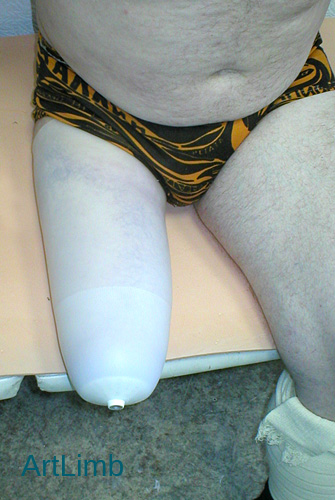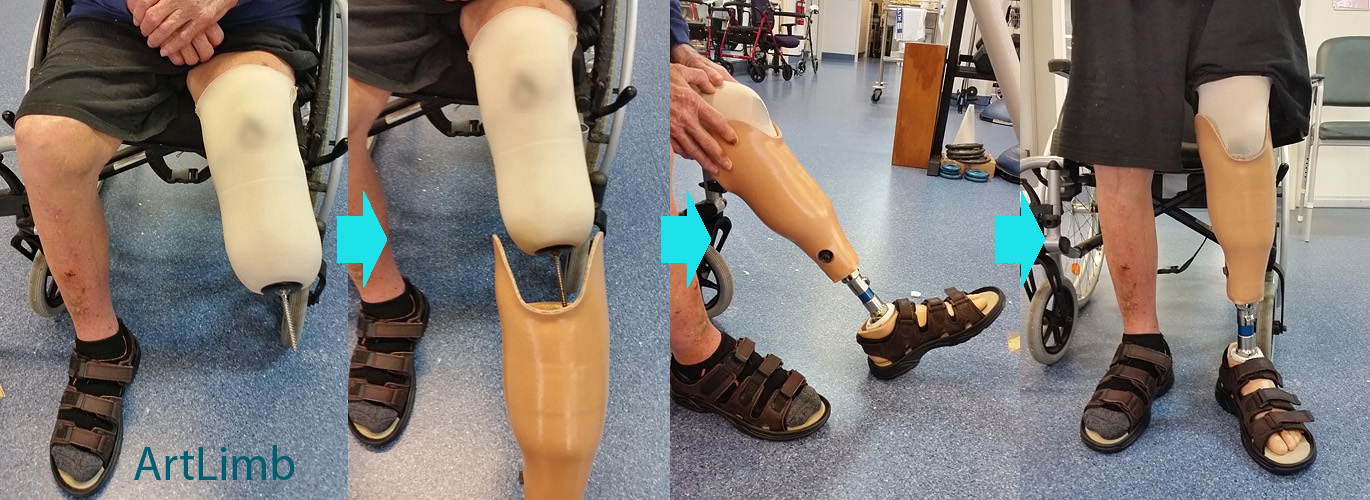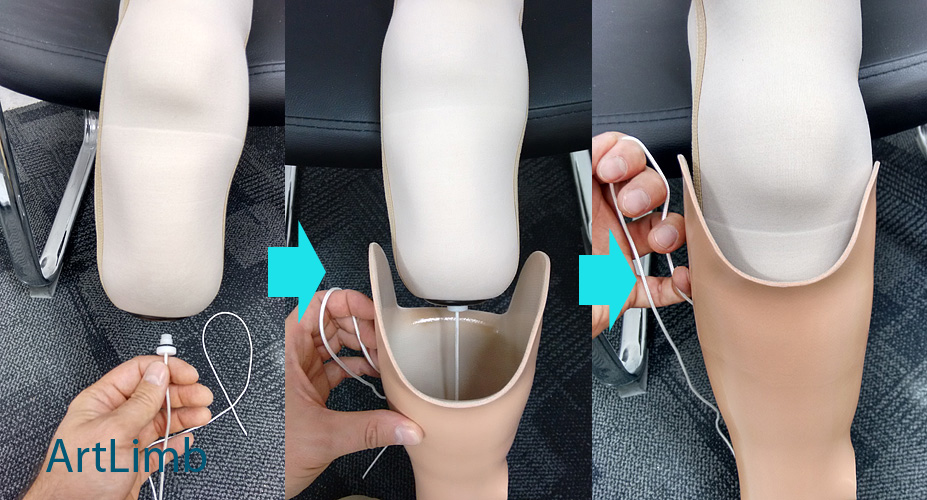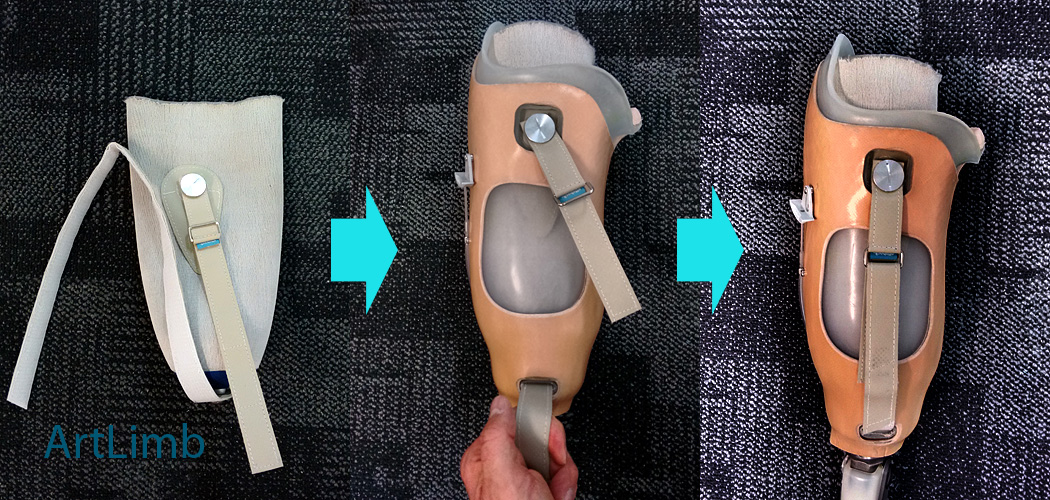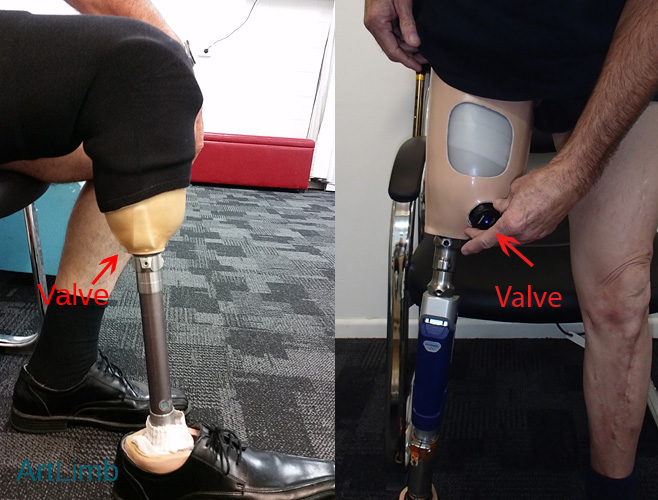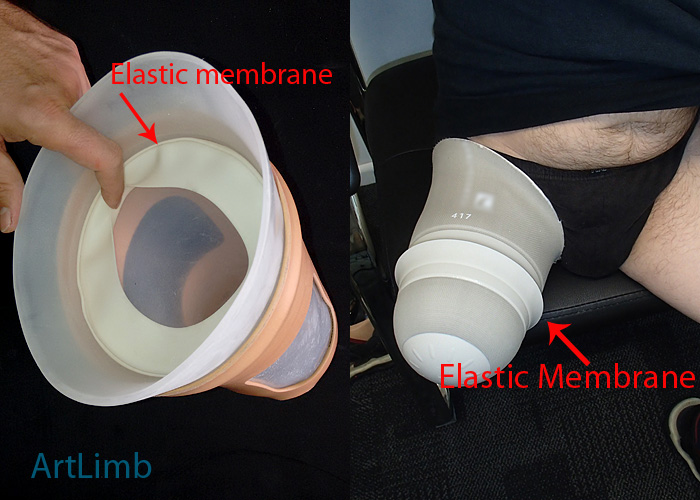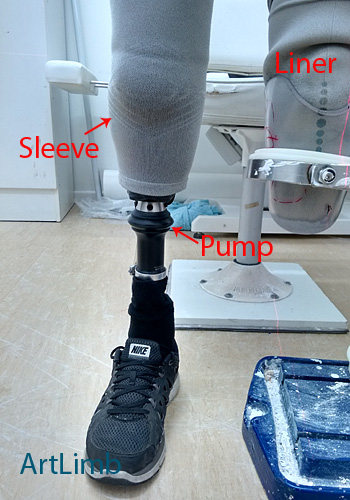Prosthetic liners are special covers made from biologically neutral, elastic materials that roll up over the stump to protect the skin and fixate the prosthesis to the body.
Currently liners are one of the most secure attachments to the prosthetic limb. There are several liner fixation systems that can be used each with their own features and indications for use.
The photo above shows a general view of a liner donned onto a stump.
Pin Locking Fixation
The photo above demonstrates the Pin Locking mechanism. This is the most common system we use for below knee amputees because it’s simple and reliable. There is a pin attached to the bottom of the liner and a lock is built into the prosthetic socket. When the wearer dons the prosthesis, the pin locks into the socket and will not unlock until a release button is pressed.
Lanyard Fixation
The photo above demonstrates a Lanyard fixation. This system can be useful for interim limbs when the stump may be bulbous is shape or when there is a lot of unstable distal soft tissue. By attaching a cord to the bottom of the liner that is pre-fed into the socket, the wearers can pull their stump down into the socket.
Webbing Strap Fixation
The photo above demonstrates a Webbing Strap fixation. This system is used in Trans-femoral (above knee) sockets. Initially it was designed for geriatric patients or those with physical limitations but currently it is being used on a larger range of patients. This system uses a combination of a prosthetic liner with webbing straps for secure donning and greater protection from rotation.
Suction Fixation
The photo above demonstrates two types of Suction fixation. Both systems use one way valves to maintain a negative pressure between the socket and the liner. When load is taken off the artificial limb, atmospheric pressure holds the prosthesis firmly in place.
The first system uses sleeves to isolate the inner socket space from the atmosphere. This system is commonly used for Transtibial (below knee) sockets.
The second system utilises membranes for the same purposes (depicted on the photo above). These membranes can be located on the liner or in the socket itself.
Elevated Vacuum
The photo above demonstrates an Elevated Vacuum system. It uses the same principles as suction fixation with the addition of a mechanical or electrical pump. This pump maintains a consistent negative pressure spread over the entire surface of the stump.
Read Liners: Part2. Materials and Characteristics⇒

